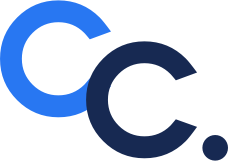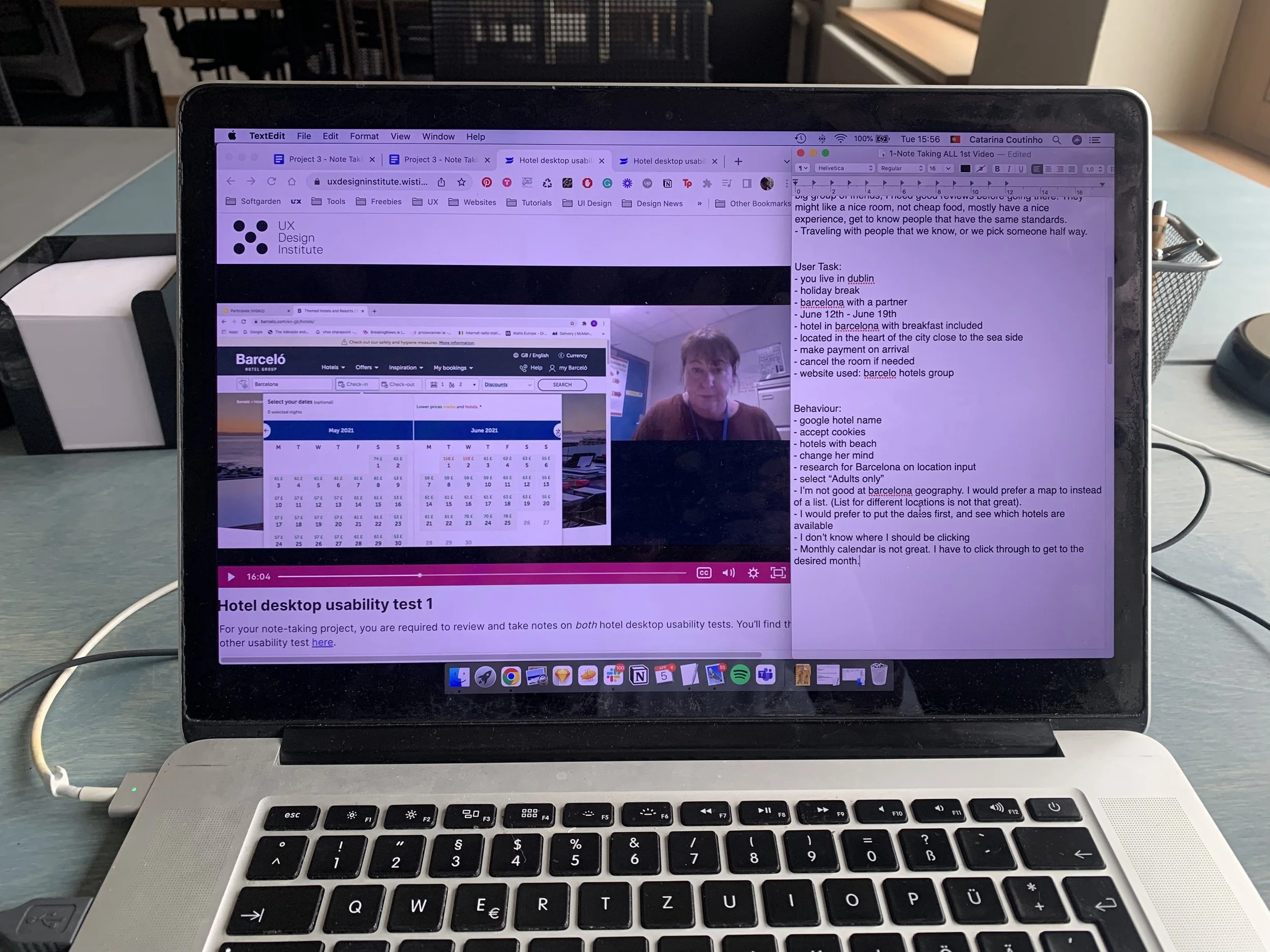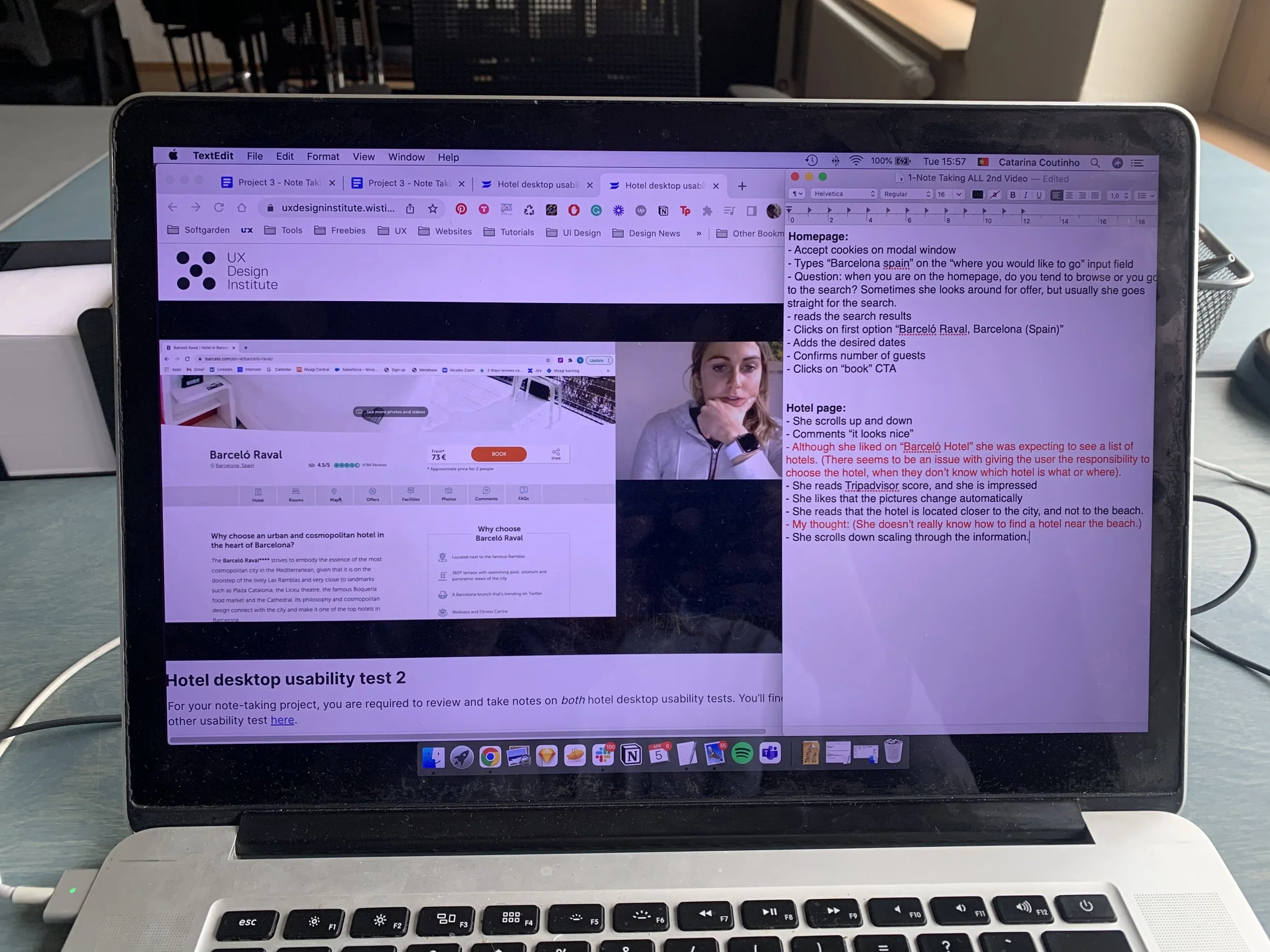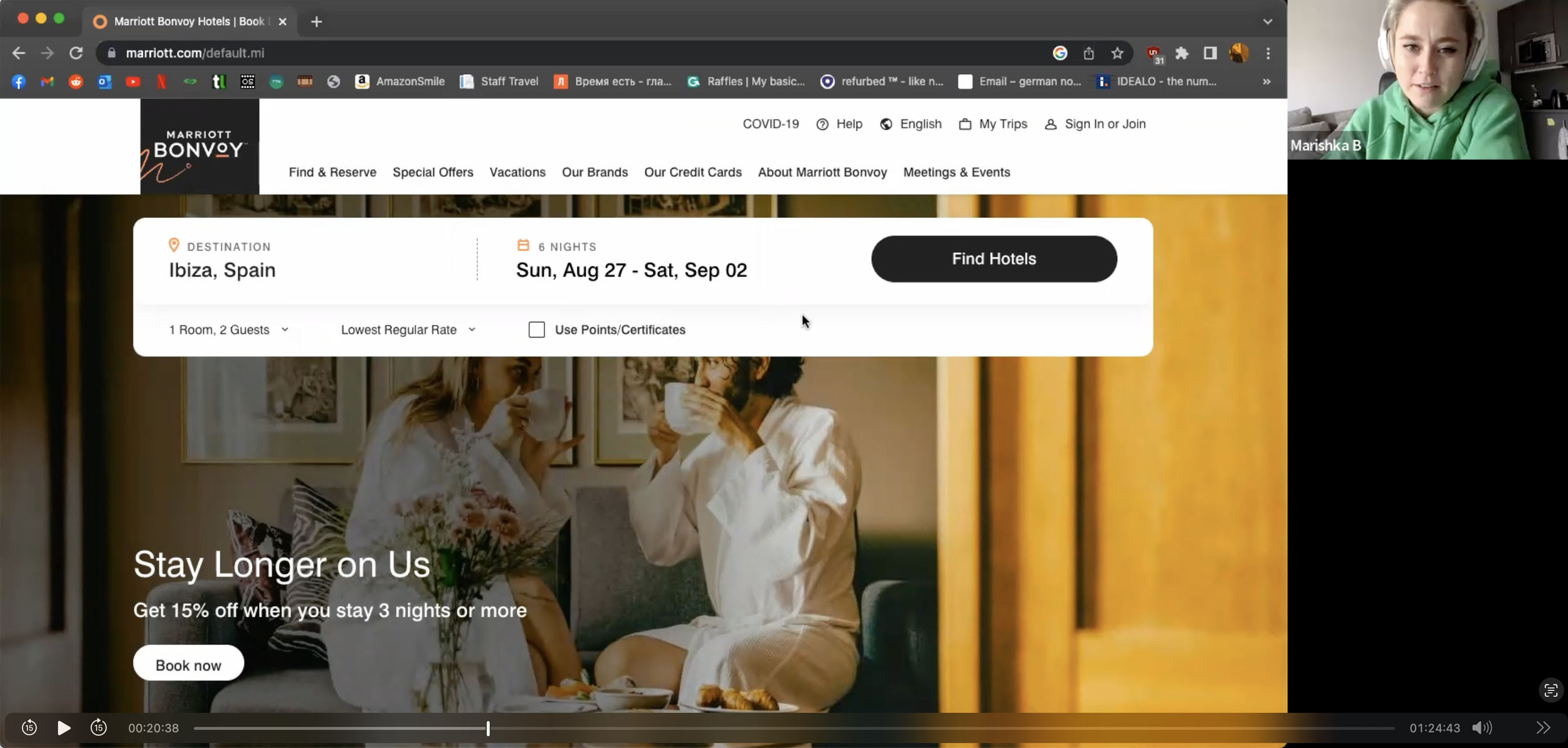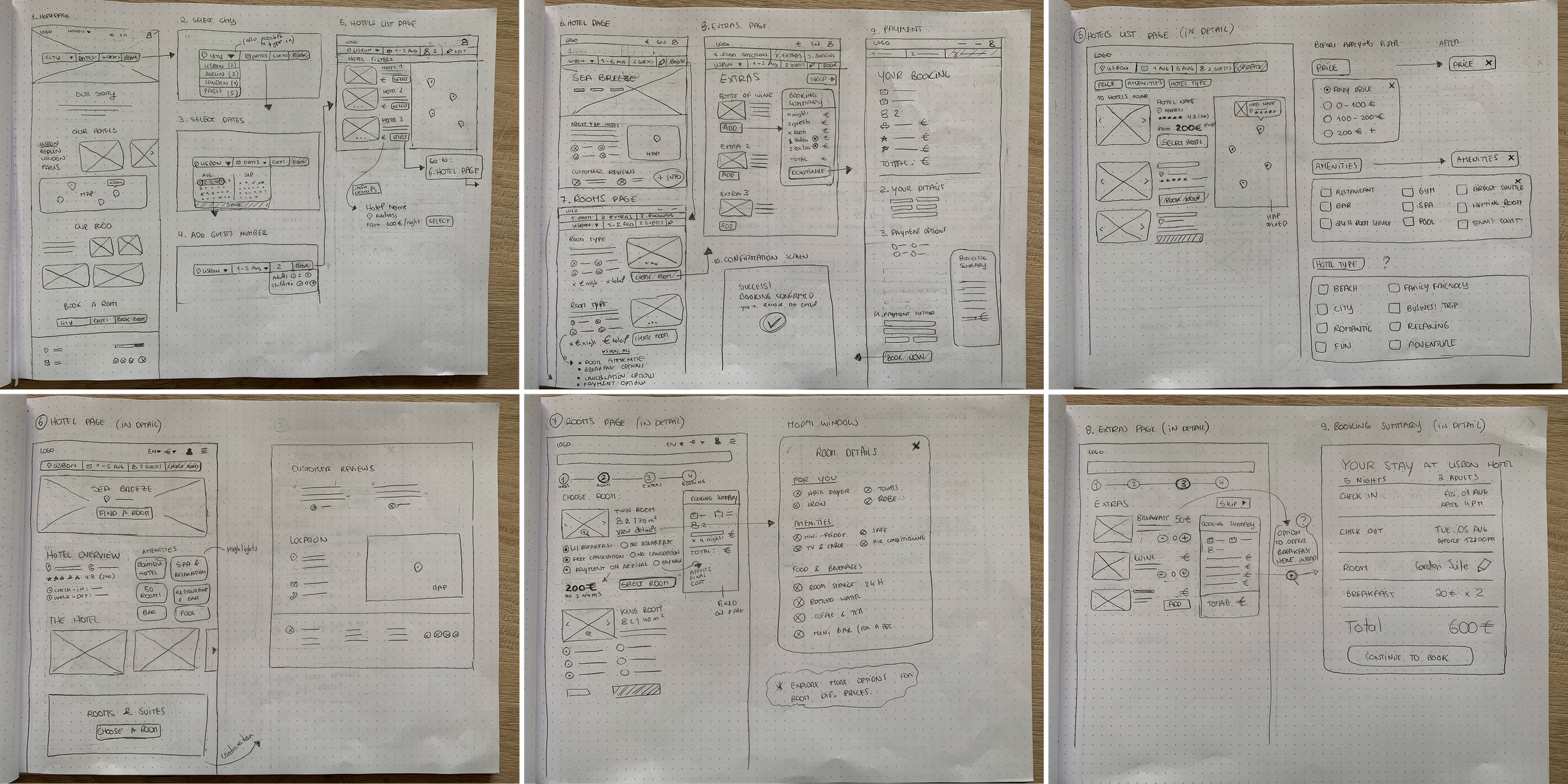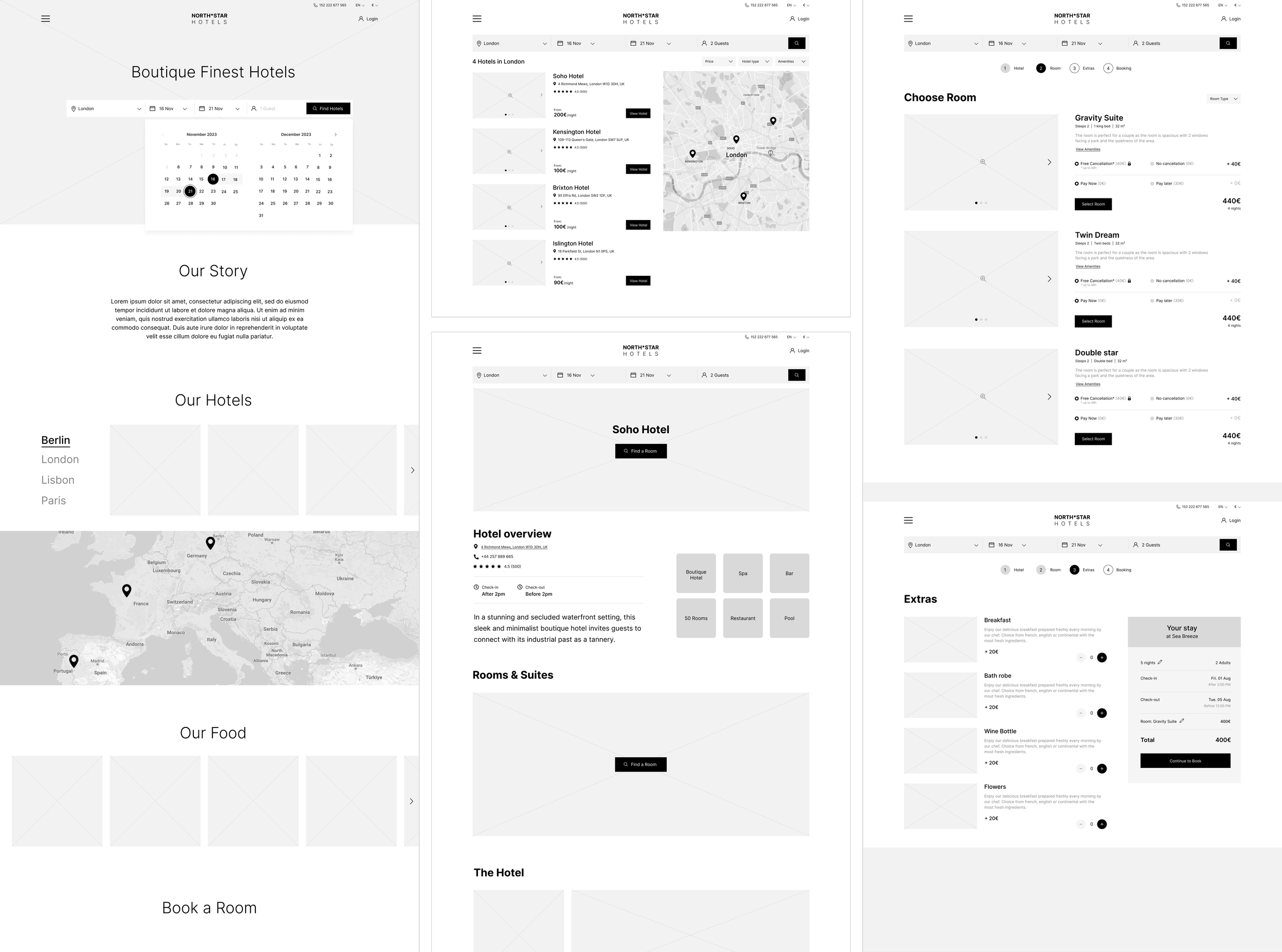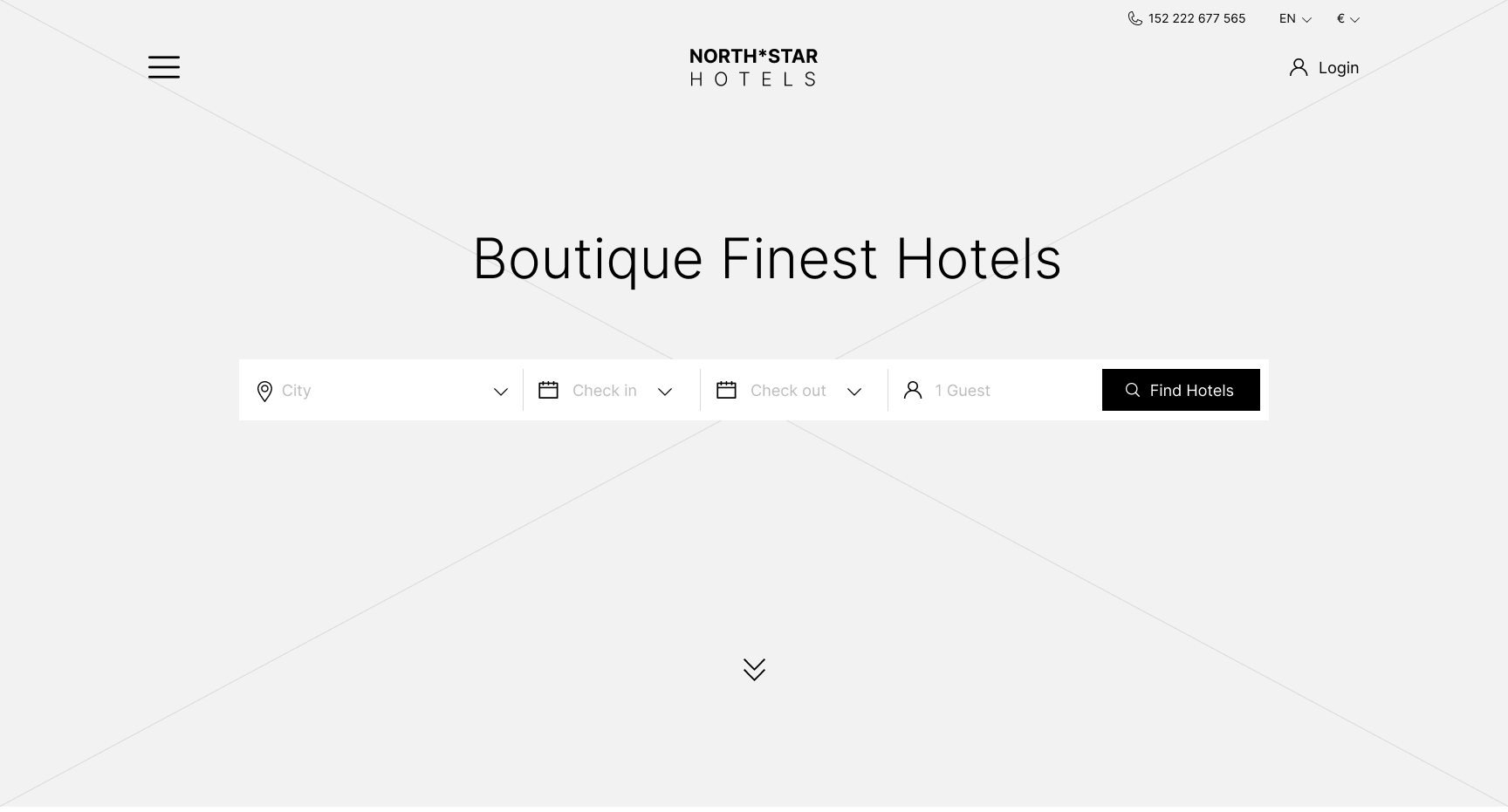Professional Diploma in UX Design
Introduction
As part of the Professional Diploma in UX Design from the UX Design Institute, I completed a series of hands-on projects that covered the entire UX process — from user research and analysis to design and prototyping.
Throughout the course, I applied industry-standard methods such as competitive benchmarking, usability testing, affinity diagramming, journey mapping, and interaction design to develop a new hotel booking website. This project served as the core case study of the diploma, demonstrating my ability to create user-centered solutions informed by research and best practices in UX design.
Credits & Info
This project was completed as personal work, made possible thanks to the generous collaboration of my friends who kindly participated in the usability testing sessions.
Competitive Benchmarking
This benchmarking exercise aimed to study leading hotel booking websites to understand how they approach the booking journey. By analyzing their structure and interaction patterns, I identified key industry conventions, best practices, and areas with room for improvement. The insights gathered would directly inform my Hotel Booking Website case study and contribute to my design portfolio.
The analysis involved reviewing four competitor websites within the hotel booking sector, all accessed via desktop. I focused on five key stages of the user journey: Homepage, Date Selection, Room Selection, Personal Details, and Payment. For each platform, I captured screenshots and added brief commentary highlighting notable design choices — whether for their usability, visual clarity, or opportunities to enhance the experience.
Online Survey
To better understand user needs and behaviors around hotel booking, I conducted a short online survey using SurveyMonkey. The goal was to learn what users aim to achieve when booking hotels, what challenges they face, and what features they wish existed.
The survey was shared via text message and LinkedIn, gathering 10 responses. Participants were asked about their preferred devices, commonly used booking platforms, and booking frequency.
Note taking
As part of this project, I practiced effective note-taking during usability testing sessions to capture key user insights. The goal was to document users’ goals, behaviors, and pain points — focusing on what would later inform design decisions rather than analyzing or solving issues at this stage.
I watched recordings of two usability tests for hotel booking websites (desktop) and took structured notes emphasizing goals, context, positive interactions, and challenges encountered by participants. These notes served as a foundation for future research and design activities throughout the case study.
Usability Testing
To better understand how users interact with hotel booking websites, I conducted a comparative usability test with 3 participants. The goal was to observe how easily they could complete key booking tasks and to uncover any usability issues or moments of friction.
During the session, the participant was asked to perform the same set of tasks across two different hotel booking websites. This approach helped reveal how each platform approached similar problems — from navigation and clarity of information to the efficiency of the booking flow.
The test was conducted on desktop, recorded for later review, and included a short interview to gather additional context about the participant’s goals, expectations, and overall experience.
Affinity Diagram
To synthesize insights from previous research activities, I created an Affinity Diagram to organize and make sense of qualitative data collected during the earlier stages of the Hotel Booking Website case study. This process helped reveal patterns in user goals, behaviors, and pain points, providing a clearer picture of the overall user experience.
Each observation from the usability testing and survey was written on individual Post-its and grouped into themes that captured recurring insights. This method made it easier to identify key opportunities for improvement and guided the next steps in the design process.
Customer Journey Map
Building on the findings from the Affinity Diagram, I created a Customer Journey Map to visualize the end-to-end experience of users booking a hotel online. This exercise helped organize research insights into clear stages, revealing how users move through the booking process, what goals they aim to achieve, and where pain points or moments of satisfaction occur.
Each step of the journey was mapped with users’ goals, behaviors, and emotional responses, highlighting both positive interactions and areas needing improvement. This visualization provided a holistic view of the experience and guided priorities for the next design phase.
Flow Diagram
After identifying key usability issues through research and mapping the customer journey, I created a Flow Diagram to define the high-level structure of the Hotel Booking Website. This diagram outlines the main user flow — from the homepage through date and room selection to the final payment screen — ensuring a logical and seamless experience.
The process helped visualize how users would navigate the website and confirmed that all previously identified issues were addressed before moving into detailed design. This flow served as the foundation for wireframing and interface development in the following project stages.
Interaction Design for Desktop
Building on the defined user flow, I moved into the interaction design phase to sketch the main screens for the Hotel Booking Website. The goal was to translate research insights and flow logic into tangible design solutions that address user needs and eliminate previously identified pain points.
Each sketch represented a key step in the booking journey — from browsing and selecting dates to reviewing room options and confirming details. Through quick iterations, I explored layout ideas, interaction patterns, and screen states to ensure a smooth and intuitive experience before moving into digital wireframes and prototyping.
Prototype for Desktop
Following the interaction design stage, I developed a medium-fidelity prototype for the Hotel Booking Website, translating the flow and sketches into an interactive experience. The prototype connected key screens — from the homepage to the booking summary — allowing users to navigate through the booking process and test the main interactions.
This step focused on validating layout decisions, content hierarchy, and the overall usability of the proposed design before moving into high-fidelity wireframes. The prototype served as a crucial bridge between concept and testing, enabling early feedback and iteration.
